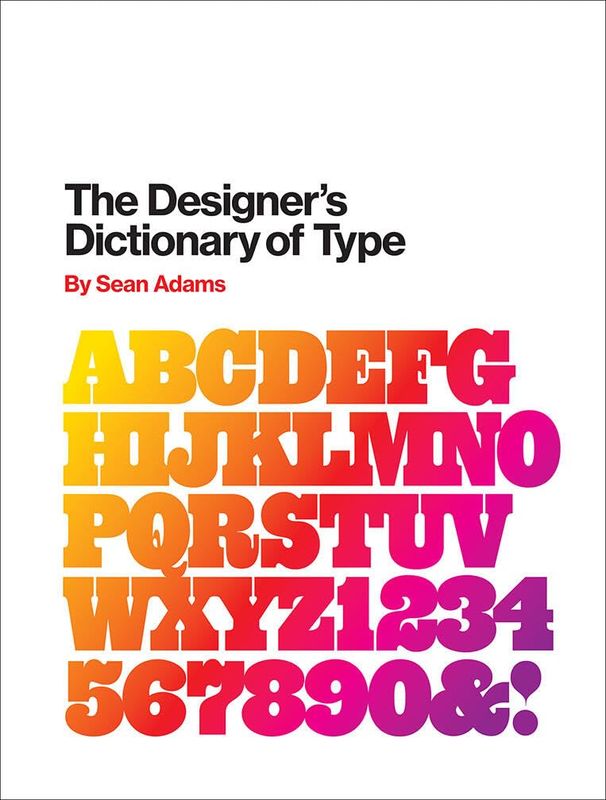Aim for a Job in Graphic Design/art Book Summary
In 'Aim for a Job in Graphic Design/Art,' S. Neil Fujita takes readers on a creative journey, sharing insider tips and industry insights that are crucial for aspiring graphic designers. This book explores the dynamic fusion of art and technology, revealing how to harness creativity in a professional setting. Through engaging anecdotes and practical advice, Fujita demystifies the job hunt process, offering strategies to stand out in a competitive field. With a focus on portfolio development and networking, readers learn how to effectively showcase their skills. Whether you're a novice or looking to advance your career, this guide ignites passion and ambition in the world of graphic design.
By S. Neil Fujita
Published: 1968
"Design is not just what it looks like and feels like. Design is how it works."
Book Review of Aim for a Job in Graphic Design/art
Defines graphic design and where and how it may be used. Also includes details on the necessary aptitudes for the work, suggestions for training, how to look for a job and biographies of some important people in the field.
Book Overview of Aim for a Job in Graphic Design/art
About the Book Author
S. Neil Fujita
S. Neil Fujita was a celebrated American author and illustrator known for his unique contributions to the world of literature and graphic arts. Born in 1928, Fujita is most renowned for his work on book covers and illustrations, particularly during the 1950s and 1960s, where his distinctive style helped define the visual identity of several classic novels. Notable works include his covers for bestselling titles such as 'Catch-22' by Joseph Heller and 'Slaughterhouse-Five' by Kurt Vonnegut. Fujita's writing often blends themes of cultural identity and personal experiences, infused with his background as a Japanese-American artist. His artistic approach combines vivid imagery with a strong sense of narrative, making his works both visually appealing and intellectually engaging. Fujita's legacy continues to influence both writers and illustrators today.
Book Details
Key information about the book.
- Authors
- S. Neil Fujita
- Published
- January 1968
- Publisher
- N/A
- ISBN
- 0823904806
- Language
- English
- Pages
- 146
- Genres
- Graphic DesignDesignArts and Culture
Purchase Options
Support local bookstores: BookShop gives a portion of each sale to independent bookshops!
Similar books you might like →
Identity Designed Book Summary
In 'Identity Designed,' David Airey takes readers on a captivating journey through the art and science of branding. This visually stunning book showcases a rich collection of global identities, revealing the strategies behind their creation. Airey delves into the psychological impact of design, urging readers to think deeply about how branding shapes perceptions. With insightful case studies and expert commentary, it sparks curiosity about the essence of identity in modern culture. Perfect for designers and entrepreneurs alike, this book invites you to explore the power of visual storytelling in building a brand.
The Visual History of Type Book Summary
'The Visual History of Type' by Paul McNeil is a stunning exploration of typography's evolution throughout history. This richly illustrated tome uncovers the stories behind iconic typefaces and the designers who created them. Readers will marvel at the interplay between type and culture, revealing how lettering has shaped our visual landscape. McNeil's passion for the subject shines, offering insights that provoke thought and inspire creativity. Dive into this captivating journey that promises to change the way you perceive the world of type!
The Designer's Dictionary of Type Book Summary
Delve into the fascinating world of typography with 'The Designer's Dictionary of Type' by Sean Adams. This comprehensive guide unravels the intricacies of typefaces, revealing their unique personalities and historical contexts. Each entry offers insights that inspire creativity and enhance design skills, making it an essential reference for both novice and seasoned designers. With stunning visual examples, the book encourages a deeper appreciation for the art and science of type. Discover how the right type can transform your work and captivate your audience!
The Evolution of Type Book Summary
'The Evolution of Type' by Tony Seddon takes readers on a captivating journey through the history and development of typography. Delve into the transformation of typefaces from ancient inscriptions to modern digital fonts, revealing the intricate relationship between technology and design. Seddon artfully illustrates how cultural shifts and artistic movements have influenced type development, creating a visual narrative that enchants both designers and history enthusiasts alike. With rich illustrations and engaging anecdotes, this book invites you to appreciate letters not just as tools for communication, but as dynamic art forms. Discover how type influences our daily lives in ways you’ve never considered, and why every letter tells a story.
Just My Type Book Summary
In 'Just My Type', Simon Garfield explores the fascinating world of typography and its profound impact on our daily lives. From the iconic fonts that define culture to the hidden messages conveyed through typeface choices, Garfield uncovers the artistry and science behind each letter. Readers are taken on a journey through history, tracing the evolution of fonts and their creators, igniting a newfound appreciation for the words we often overlook. With humor and insight, the book invites us to rethink the way we view text and design. Prepare to look at the printed word in an entirely new light!
100 Things Every Designer Needs to Know about People Book Summary
In '100 Things Every Designer Needs to Know about People,' Susan Weinschenk unveils essential psychological principles that can enhance design effectiveness. With insights drawn from cognitive science, the book explores how people perceive, interact with, and make decisions about design. From the nuances of color perception to the importance of empathy in user experience, Weinschenk offers practical strategies for designers. Each principle is supported by fascinating research, making the content both informative and engaging. This enlightening guide equips designers to create more intuitive and user-friendly experiences, sparking curiosity about the intersection of psychology and design.
The Art of Game Design Book Summary
In 'The Art of Game Design,' Jesse Schell unravels the captivating world of game development, blending theory and practical insights. He presents a unique perspective that gaming is not just a skill but an art form, exploring what truly makes games immersive and memorable. With a combination of engaging anecdotes and hands-on exercises, Schell invites readers to think like designers and embrace creativity. The book serves as a comprehensive guide, making it an essential read for aspiring game creators and enthusiasts alike. Dive into the playful intricacies of design and discover the secrets that could inspire your next game masterpiece!
Gamification by Design Book Summary
In 'Gamification by Design', the authors explore the art and science of integrating game mechanics into non-game contexts to enhance user engagement and motivation. They uncover the psychology behind what makes games addictive and how these principles can be applied to real-world scenarios. Through practical case studies and actionable frameworks, the book reveals how gamification can be a catalyst for innovation and user loyalty. Are you ready to unlock the secrets of game mechanics and transform your projects? Dive into this insightful read to discover how to design experiences that captivate and retain users!
Showing 8 of 30 similar books
Similar Book Recommendations →

Dustin Moskovitz's Book Recommendations
Dustin Moskovitz is an American entrepreneur and co-founder of the social networking website Facebook, which has become one of the most influential platforms globally. He later co-founded Asana, a popular work management tool designed to help teams orchestrate their work, from daily tasks to strategic initiatives. While Moskovitz is not primarily known for contributions to literature, his impact on the tech industry and workplace productivity has been widely documented and analyzed in numerous books and articles. His philanthropic efforts through the Good Ventures foundation, which he started with his wife Cari Tuna, also highlight his significant role in promoting effective altruism. Moskovitz's work continues to influence both technology and business management practices around the world.

David Kadavy's Book Recommendations
David Kadavy is an author, podcast host, and creativity expert, best known for his books The Heart to Start and Design for Hackers, where he explores the intersection of creativity, productivity, and design. Kadavy's work focuses on helping creators overcome procrastination, build meaningful habits, and find motivation to pursue their creative projects. He is also the host of the Love Your Work podcast, where he interviews high-performing individuals across various fields about their creative processes and productivity techniques. Kadavy’s insights stem from his own experiences as a designer and entrepreneur, offering practical advice on how to break through mental blocks and create with intention. His work emphasizes the importance of self-discipline, creativity, and a minimalist approach to both design and life. Kadavy’s books and podcast have garnered a global audience, positioning him as a thought leader in the realms of personal development and creative success.

Cleo Abram's Book Recommendations
Cleo Abram is a distinguished journalist and content creator known for her incisive storytelling and engaging multimedia presentations. She gained widespread recognition as a producer and host for Vox's acclaimed series, "Glad You Asked," where she explored complex topics with clarity and depth. Abram's work often intersects with technology and culture, making intricate subjects accessible to a broad audience. In addition to her journalistic endeavors, she has contributed thought-provoking essays and articles to various esteemed publications. Her innovative approach to storytelling continues to influence and inspire both readers and aspiring journalists.

Brett Adcock's Book Recommendations
Brett Adcock is an entrepreneur and co-founder of Archer Aviation, an electric vertical takeoff and landing (eVTOL) company focused on revolutionizing urban air mobility. Prior to founding Archer, Adcock co-founded Vettery, a talent marketplace that connects companies with job seekers using data-driven matching technology, which was later acquired by the Adecco Group. At Archer, Adcock is working to build the future of transportation with electric aircraft designed for short-distance flights in urban areas. His vision for the future of air travel has made him a key player in the growing eVTOL and aviation technology industries.

Jeremiah Shoaf's Book Recommendations
Jeremiah Shoaf is a distinguished designer and writer, best known for his influential contributions to typography and design literature. As the founder of Typewolf, a renowned website that guides designers in selecting the perfect fonts, Shoaf has become a vital resource in the design community. His insightful articles and reviews on typography have earned him a significant following and respect among design professionals. Shoaf's work has been featured in numerous design publications, solidifying his status as an authority in the field. Beyond Typewolf, his broader contributions to design education have inspired and informed both aspiring and established designers worldwide.

Jeff Atwood's Book Recommendations
Jeff Atwood is an American software developer, writer, and co-founder of Stack Overflow, the largest online community for developers to share knowledge and collaborate on coding problems. Atwood is also known for his influential blog Coding Horror, where he writes about programming, technology, and software development practices. His work on Stack Overflow has revolutionized the way developers learn and share information, fostering a collaborative, open-source culture within the tech community. Atwood’s contributions to software development have made him a key figure in the tech industry, particularly in developer education and open knowledge sharing.

Benedict Evans's Book Recommendations
Benedict Evans is a renowned technology analyst and commentator, acclaimed for his insightful analyses on technology trends and their societal impacts. With a background in venture capital and strategic consulting, Evans has become a prominent voice in the tech community through his thought-provoking essays and presentations. His work often explores the intersection of mobile technology, media, and internet platforms, offering a nuanced understanding of complex tech ecosystems. Evans is widely respected for his ability to distill intricate technological developments into accessible and compelling narratives. His contributions have significantly influenced industry leaders and informed public discourse on the future of technology.

Bill Gates's Book Recommendations
Bill Gates, co-founder of Microsoft Corporation, is a pioneering figure in the tech industry, having played a key role in the personal computer revolution. His work at Microsoft, particularly the development of Windows, transformed software and computing globally. Beyond his technology contributions, Gates is also a prolific author, with notable works such as "The Road Ahead" and "Business @ the Speed of Thought," which offer insights into the future of technology and business. Additionally, his philanthropic efforts through the Bill & Melinda Gates Foundation have had a profound impact on global health, education, and poverty. Gates continues to influence both technology and literature with his forward-thinking perspectives and innovative ideas.
Showing 8 of 13 related collections
“Design is not just what it looks like and feels like. Design is how it works.”
Aim for a Job in Graphic Design/art
By S. Neil Fujita
Frequently Asked Questions
Explore Our Catalogue
Discover a world of knowledge through our extensive collection of book summaries.
Genres
Genres
Genres
Featured Collections
- Top Book Club Picks
- One-Stop Nutrition
- Summer Reads 2024
- Best Beach Reads 2024
- Work-Life Balance Guide
- Time Management
- Healthy Foods
- Entrepreneur Toolkit
- Mind & Body Wellness
- Future Tech Insights
- Leadership Essentials
- Financial Freedom
- Sci-Fi Masterpieces
- Parenting 101
- Books That Became Blockbusters
- Guide to a Healthy Pregnancy










